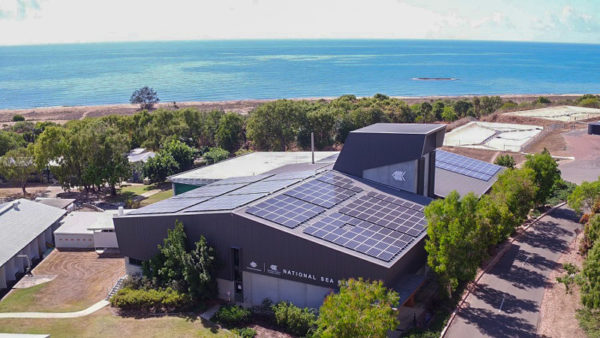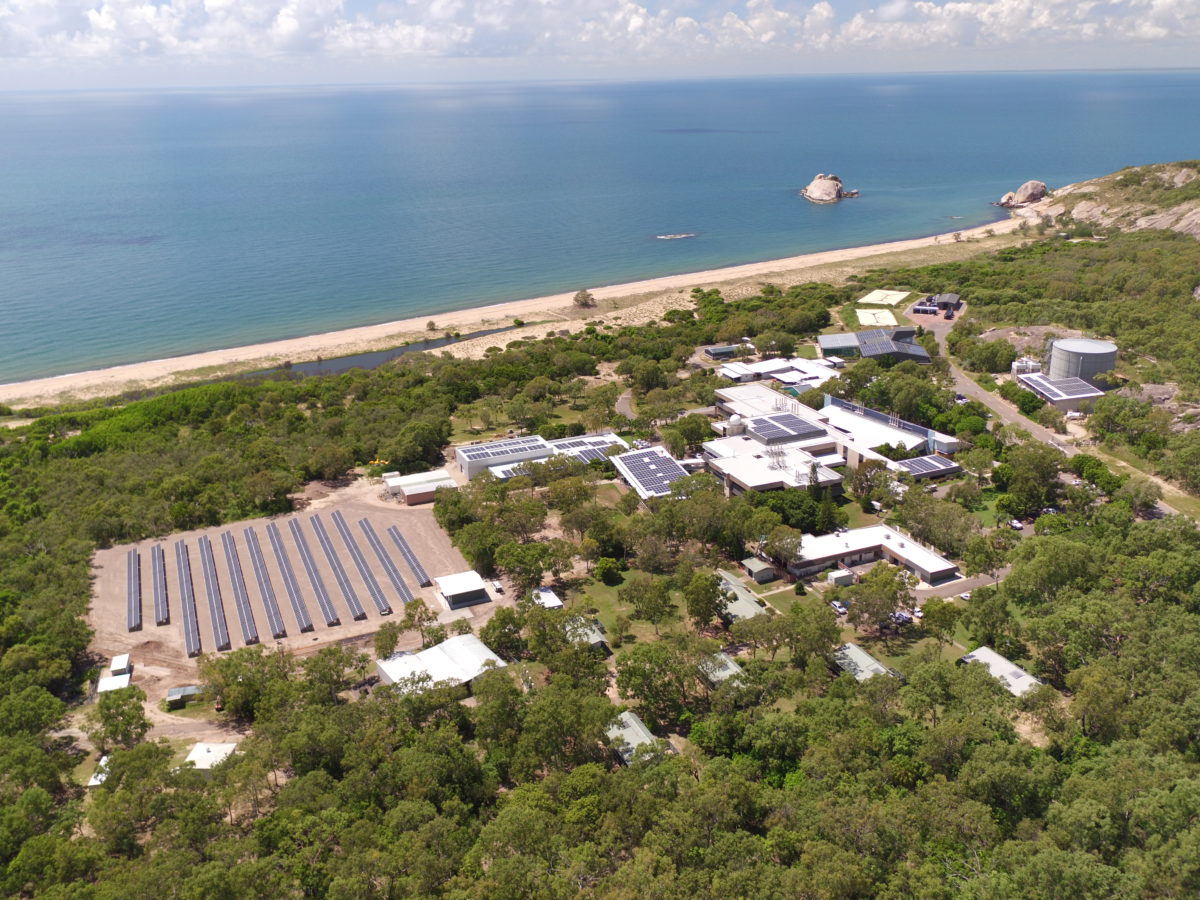The Australian Institute of Marine Sciences (AIMS) will see its electricity bill drop off like the Mariana Trench after the installation of a considerable $2.25 million solar array at its headquarters near Townsville.
With the help of the Australian Government’s Public Modernisation Fund, AIMS is investing in solar at all the Institute’s sites across Australia, including a system already in place at its research facility in Darwin, and a system on its way to AIMS facility in Perth.
AIMS is Australia’s tropical marine research agency, and as such its focus is on real-world outcomes in marine science, a field in which the impacts of climate change are obvious as bleach. “A significant proportion of AIMS’ research focuses on the impact of climate change on tropical marine ecosystems,’ said AIMS CEO Dr Paul Hardisty, “so we wanted to lead the way in cutting down our own emissions.”
“We are working towards a 25% reduction in our own carbon emissions..” continued Hardisty. “Not only does the system deliver environmental benefits, but it is forecast to deliver up to $400,000 a year in savings, which means we can put more money back into science.”
It is expected that the solar system will generate approximately 1000 kW per hour, reducing the Institute’s carbon footprint by 15%, a significant amount considering how much energy it requires to run aquariums and other research-related marine environs. Indeed, it is the Institute’s National Sea Simulator, the world’s most advanced research aquarium, which is capable of simulating, quantifying and predicting the effects of multifarious pressures on marine and coastal ecosystems, that is expected to reap the greatest reward for the switch to solar.

“The National Sea Simulator allows us to undertake complex research which was not previously possible anywhere in the world,” said AIMS COO Dr John Chappell, “including work on assessing the impact of complex environmental changes, and reef restoration.”
AIMS research has shown that the Great Barrier Reef, Australia’s Elongated Eden, has lost half its coral cover since 1985, a decline unprecedented in at least the past 400 years. One of the known causes of this decline is increased sea temperature, another is storm damage, and another is unusual outbreaks in crown-of-thorns starfish. Climate Change is a key suspect in each of these cases. Moreover, we know that rising carbon dioxide levels in the atmosphere leads to oceanic acidification and other chemical alternations that negatively impact coral.
We also know that solar PV is nothing but a salve to all these irritants upon the sanctuary of our nation.
This content is protected by copyright and may not be reused. If you want to cooperate with us and would like to reuse some of our content, please contact: editors@pv-magazine.com.









1 comment
By submitting this form you agree to pv magazine using your data for the purposes of publishing your comment.
Your personal data will only be disclosed or otherwise transmitted to third parties for the purposes of spam filtering or if this is necessary for technical maintenance of the website. Any other transfer to third parties will not take place unless this is justified on the basis of applicable data protection regulations or if pv magazine is legally obliged to do so.
You may revoke this consent at any time with effect for the future, in which case your personal data will be deleted immediately. Otherwise, your data will be deleted if pv magazine has processed your request or the purpose of data storage is fulfilled.
Further information on data privacy can be found in our Data Protection Policy.